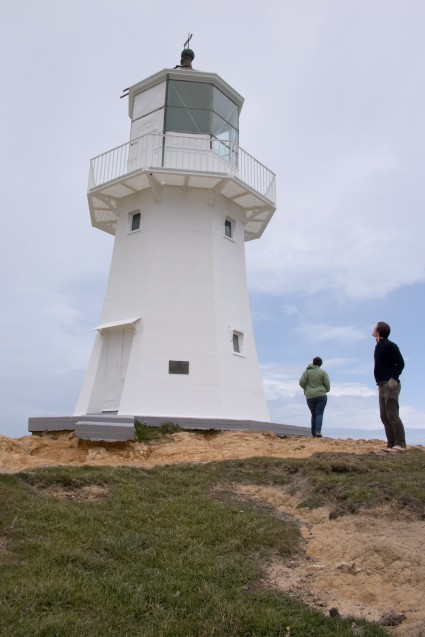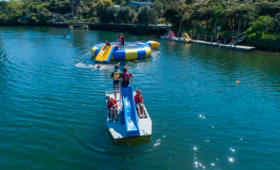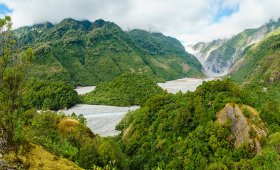New Zealand's Top 10 Historical Sites
Though New Zealand is counted as a “younger” country (having been settled by early Maori 700 years ago, and then colonised by the British in the 19th century), our rich and varied history makes up for it being such a short one. If you’re a New Zealand history buff or simply like historic things, add these Top 10 Historical Sites to your New Zealand destination list!
Don’t forget, no matter where you are, there’s a Kiwi Holiday Park nearby for you to relax at and enjoy.
1. Stone Store and Mission House, Kerikeri
Mission House (sometimes known as Kemp House) is the oldest surviving building in the country, and the nearby Stone Store is the oldest surviving stone building. They were built in 1821-22 and 1832-36 respectfully, with the Kemp House originally used as a mission house and occupied by the Kemp family from 1832 to 1974.
2. Queen Victoria Statue, Albert Park, Auckland
Unveiled in 1899, New Zealand’s first statue memorialised the very close ties with Britain at the time. From 1903, people gathered here for Empire Day on the 24th of May to celebrate the late queen’s birthday. Empire Day became Commonwealth Day in 1958, but has since almost disappeared from the celebratory calendar.
3. Treaty House, Waitangi
The Treaty of Waitangi is the founding document of New Zealand, signed on the 6th of February, 1840. It secured British sovereignty over New Zealand, two versions in English and Maori were presented with over 540 Maori chiefs signing the documentation.
There has been great debate over the understanding of the Treaty, the way it was translated, and the alleged breaches of the Treaty by the Crown, but nonetheless it remains an important part of our history and the founding document of the nation.
4. Basin Reserve, Wellington
When an earthquake in 1855 drained a shallow swamp destined to be a dock, a recreation reserve was founded in its place. In 1863, local prisoners added fill to the site and a grandstand had been erected by 1868.
A citizen’s committee designated it as a cricket ground, and it has been ever since – though it has housed a number of other sports, events, political and royal visits, and it was the site of New Zealand’s first display of electricity in 1879.
5. Pencarrow Lighthouse, Pencarrow Head, Wellington
The Pencarrow lighthouse was New Zealand’s first permanent lighthouse, and the only one to have had a female as its keeper.
Mary Bennett operated the lighthouse from its first night, lit up on 1 January 1859, until returning to England in 1865. The light was decommissioned and replaced by the Baring Head lighthouse in 1935, but stands to this day welcoming visitors into the Wellington Harbour.

6. Edwin Fox - Picton
Of the ships that bought settlers to New Zealand in the 19th Century, only two survive – including that of the Edwin Fox. Since entering the water in 1853, the Edwin Fox has had a multi-faceted history.
She’s most well-known for helping to ferry close to 100,000 migrants that came from England to New Zealand in 1800s, but throughout her life time has also carried troops to the Crimean war, transported convicts to Australia, and was used as cool storage, accommodation, and a coal hulk.
7. Takiroa Rock Art Shelter, Takiroa, Otago
Dating back as early as the 1400s, charcoal and ochre drawings adorn the limestone caves and overhangs of the valley of the Waitaki River. No one knows who created these artworks, but bones found from moa and other extinct bids suggest a very early start, and depictions of European ships and animals suggest that the tradition of painting here was revived. The images on the walls show birds, animals, people and abstract forms.
8. Lyttelton Rail Tunnel
In the 1850s, transporting people and goods to Christchurch was a hassle via foot or by boat. When a railway line and tunnel was proposed, an English contractor started the work, but gave up when they hit the rock of an extinct volcano. An Australian contractor took up the work, and men began to dig in with picks, long chisels and gunpowder. Moving at around three meters a week, breakthrough was made in 1867. The 2.4km tunnel is still used today, and survived the 2010/11 Canterbury earthquakes – a testament to how well it was constructed.
9. Waitaki Dam
At the peak of its build, 1200 men labored with picks, shovels and wheelbarrows – even though newer technology was available at the time.
It was the early 1930s, and the great depression had its grips on the country, so older tools were used to raise the number of people employed to build the Waitaki Dam. The dam does not have a spillway - instead the water of Lake Waitaki flows between the disrupters on the dam face, making for a spectacular sight during flood periods.
10. Gabriel’s Gulley, Otago
In June of 1861, Gabriel Read told the Otago Witness that he had found large quantities of gold “shining like the stars in Orion on a dark frosty night” in a small gulley close to the town of Lawrence. By December that year, 12-14,000 people were camped out around Gabriel’s Gulley and the surrounding fields, sparking New Zealand’s first large gold rush and turning Dunedin into a very wealthy area. Marvel at the landscape that was totally transformed by the mining there – the original gulley floor sits 50m below the level it is today.
New Zealand’s history is a diverse, tumultuous, unique, short yet interesting story, and we’re excited to be able to share the story of our heritage with our visitors and guests. These are just a few of the wonderful historic places around New Zealand.
Your Kiwi Holiday Park hosts will be happy to guide you in the direction of places of interest near you. We’d love to hear about what you see and do – tell us about it in a comment below!
Photo credits:
Pencarrow 2 by Aidan, CC-BY-2.0
Lawrence Gabriel’s Gulley Road, Wikimedia Commons








